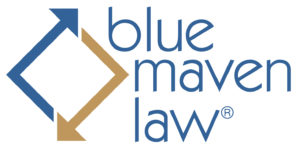The end-of-year deal-closing season has just come to a close. So I’ve been sending a lot of emails that I don’t want to screw up.
We’ve all felt it, that feeling of dread deep in your gut just after you hit “send.” Did I send that sensitive document to the wrong party? Did I attach the right document? Did I delete stuff from the bottom of the email chain that shouldn’t be forwarded? Fearing the worst, you click on the email in your “sent” folder to see whether life will go on as normal. Or whether you’ll need to polish up your resume.
Routine is a quality killer
Sending an email is so easy. It’s so routine. So why do we mess it up so often when there’s so much at stake?
Routine can be immensely helpful for making us more efficient. And probably more proficient, also. When we’ve done something repeatedly, it becomes second-nature to us. So much so that we don’t need to think about what we’re doing. We just do it, without thinking.
And therein lies the problem. Sometimes we really need to think about what we’re doing.
High-tech and low-tech solutions
High-tech features of commonly-used programs can lend a helping hand. Take email attachments for example. We’ve all embarrassed ourselves by forgetting to attach a document to an email. But most modern email programs now save us from ourselves, by prompting us with a warning message when we try to send a message without an attachment when the content of the message suggests that there should be one (“I’ve attached for your review the TPS report…” Are you sure?).
But checklists–a decidedly low-tech solution–can be just as effective. In The Checklist Manifesto: How to Get Things Right, Atul Gawande demonstrates how creating simple checklists to prompt our memory is a simple solution for routine-induced stupidity.
In the book Gawande provides several examples of how checklists help improve the quality of routine work, from pre-flight checklists pilots use to make sure there’s fuel in the plane to surgery checklists to make sure all the sponges and clamps are accounted for before the patient is sewn back up.
Email checklist starter kit
I’ve put together my own checklist to save myself from myself when I’m sending important emails. The problem, of course, is taking the extra few seconds to run down the list before hitting “send.”
- Check the names of all email recipients. Is the email addressed to the correct parties? Are there people who don’t belong?
- Check the domain names of all email recipients. If one of the recipients has an email address that belongs to the enemy, you’ve got a problem.
- Proofread your email (again). I used to be an editor. I still make stupid typos. (Can you spot the typos in this post? Please shoot me an email.)
- Scroll to the bottom of the email. More than one person has been embarrassed by something at the bottom of an email chain that shouldn’t be forwarded. Or an artifact from your early draft that got pushed down to the bottom. I like to trim off what’s not necessary if I’m forwarding an email chain.
- Open each attachment and confirm that it’s the correct version. You might think you clicked on “TPS Report” when attaching that document, but weird things happen when you’re on autopilot and you’re in a hurry.
- Cross your fingers and pray. This step is optional. Prayer often begins after hitting “send.”
What do you think? Do you use checklists for routine, yet important, tasks? What would you add to mine?


Not exactly the same as your checklist but other email hygiene practices I use:
–Never fork an email thread, esp. by keeping the same subject line but including only certain people from the initial distribution. Always start a new thread for side discussions.
–Sometimes you get a nervous feeling about sending an email on a sensitive topic. Don’t hit send until you feel confident about it.
Thanks, Jay. These are great tips. I always get a nervous feeling about sending an email on a sensitive topic. A lot of havoc has been wreaked by the send button (fortunately not by me…).
> (fortunately not by me…).
I wish I could say the same. 😉
I used to have a one minute delay automatically added by Outlook between pressing send and the email actually being sent (set up in email rules). This gave me a minute to abort if needed! For some reason, no matter how many times you check before sending, some things slip through. The difficulty with checking, even thoroughly, is that you often read what you think you wrote, not actually what you wrote. For some reason after pressing send you see the email for what it actually says (or who you really sent it to), and a minute is more than enough time to catch anything stupid – as you say, it’s just a gut feeling sometimes.